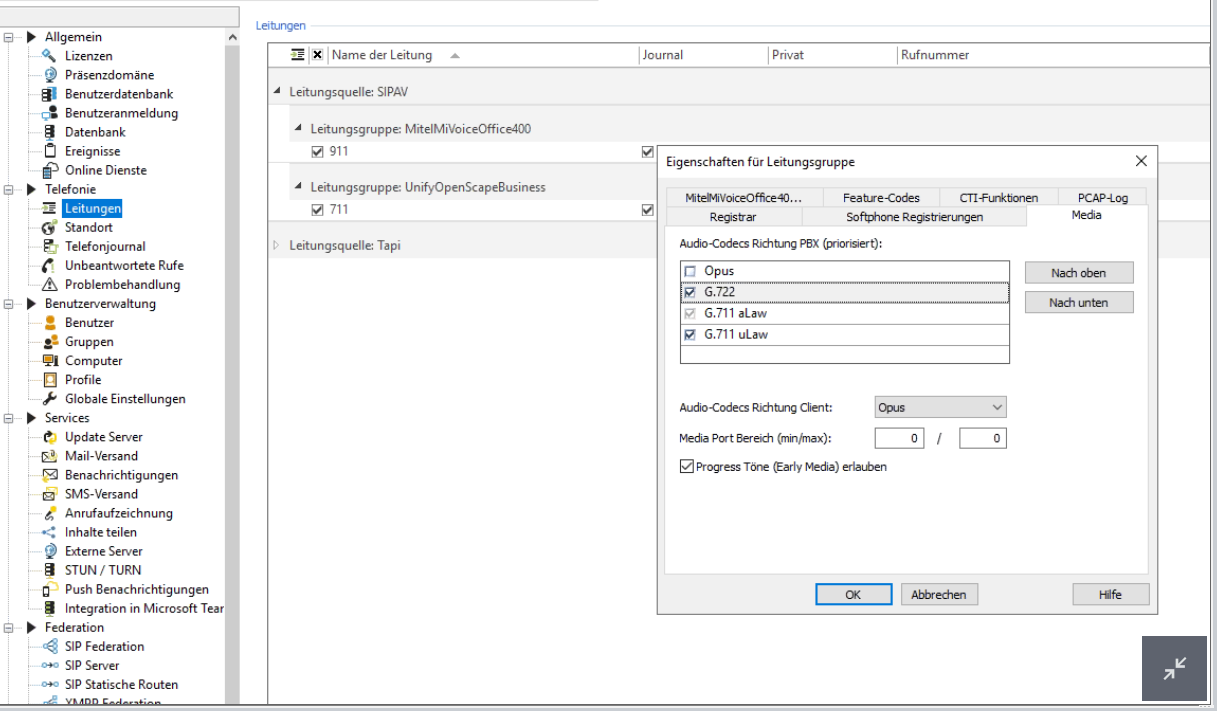HD Voice/HD Telephony with ProCall Enterprise SIP softphone functionality
| Update status | January 2024 |
|---|---|
| Product relevance | ProCall 8 Enterprise ProCall 7 Enterprise from 7.5 |
HD Voice
What is HD Voice?
HD Voice or HD Telephony means making calls with excellent voice quality.
As of Service Release 5 (Version 7.5), ProCall 7 Enterprise supports the two HD Voice Codecs Opus and G.722 for SIP softphone functionality in the direction of the telephone system or end devices on a telephone system.
On the client side, the use of Opus as HD codec has been possible for a long time. Audio and video chat have been using this codec for voice transmission since its introduction with ProCall 5 Enterprise.
When can HD Voice be used?
Note that for HD Voice, the entire chain of participating components (end device, PBX, trunk, etc.) must support the codec G.722 (or Opus as well).
It is only possible to ensure that ProCall Enterprise's own components support the technology.
HD Voice – Tested telephone systems with ProCall 7 Enterprise
For the release of ProCall 7 Enterprise 7.5, HD Voice was fully tested and released on the following PBXs:
- PBX-specific configuration: Setting up softphone functions (SIP) for Mitel MiVoice Office 400 – connection instructions
- PBX-specific configuration: Setting up softphone functions (SIP) for Unify OpenScape Business – connection instructions
For the release of ProCall 7 Enterprise 7.5.2, HD Voice was fully tested and released on the following PBXs:
You can also activate the HD Voice functionality on other telephone systems. Please note, however, that we have only performed basic tests and not a complete test..
Further telephone systems will be specifically released by us for HD Voice in the future.
Enable and prioritize codecs in UCServer
In the UCServer administration under "Lines → Properties of the corresponding line group → Media" you can activate and prioritize the HD codecs Opus and G.722.

Codec Opus aimed at clients
Note that you should enable Opus aimed at clients as well.
Supported codecs
The MediaServer supports the following codecs:
- G.711 (8kHz sample rate)
- G.722 (16kHz sample rate)
- Opus (up to 48kHz sample rate).
Typically, telephone systems offer at least one G.711 codec (with the variants aLaw PCMA or uLaw PCMU). Therefore, the G.711 aLaw codec is always active and cannot be deselected. Many telephone systems additionally offer HD telephony. The codecs for HD telephony offer a wider frequency spectrum than with the otherwise usual G.711 codec due to higher sampling rates. This improves the sound during audio transmission and makes the conversation more intelligible. A widely used codec for HD telephony is G.722, which (depending on the remote station, PBX and exchange) can be used in many cases for internal and external calls. A very modern, but not so common codec, is Opus. If the telephone system supports Opus, the best call quality can be used for internal calls with softphones or compatible telephones.
If a certain PBX type has been successfully tested by us with G.722, the codec is activated by default when a new softphone line group is created.
In all other cases, the desired codec can also be activated afterwards. If the telephone system has not been tested with G.722, activation is at the user's own risk.
You can find information about the status of our tests at Connection instructions for telephone systems.
More notes
When negotiating the codec, the inviting (INVITE sending) call partner normally determines which codec is to be used.
For example, if there is an incoming call from a PBX terminal to the ProCall softphone and the SDP (Session Description Protocol) of this INVITE specifies the order G.711, G.722 as the prioritization of the codec, then the ProCall softphone will negotiate G.711, even if G.722 would have a higher priority on the ProCall side.
ProCall Enterprise has no influence on the prioritization of the codecs of the telephone system or terminals for incoming calls.